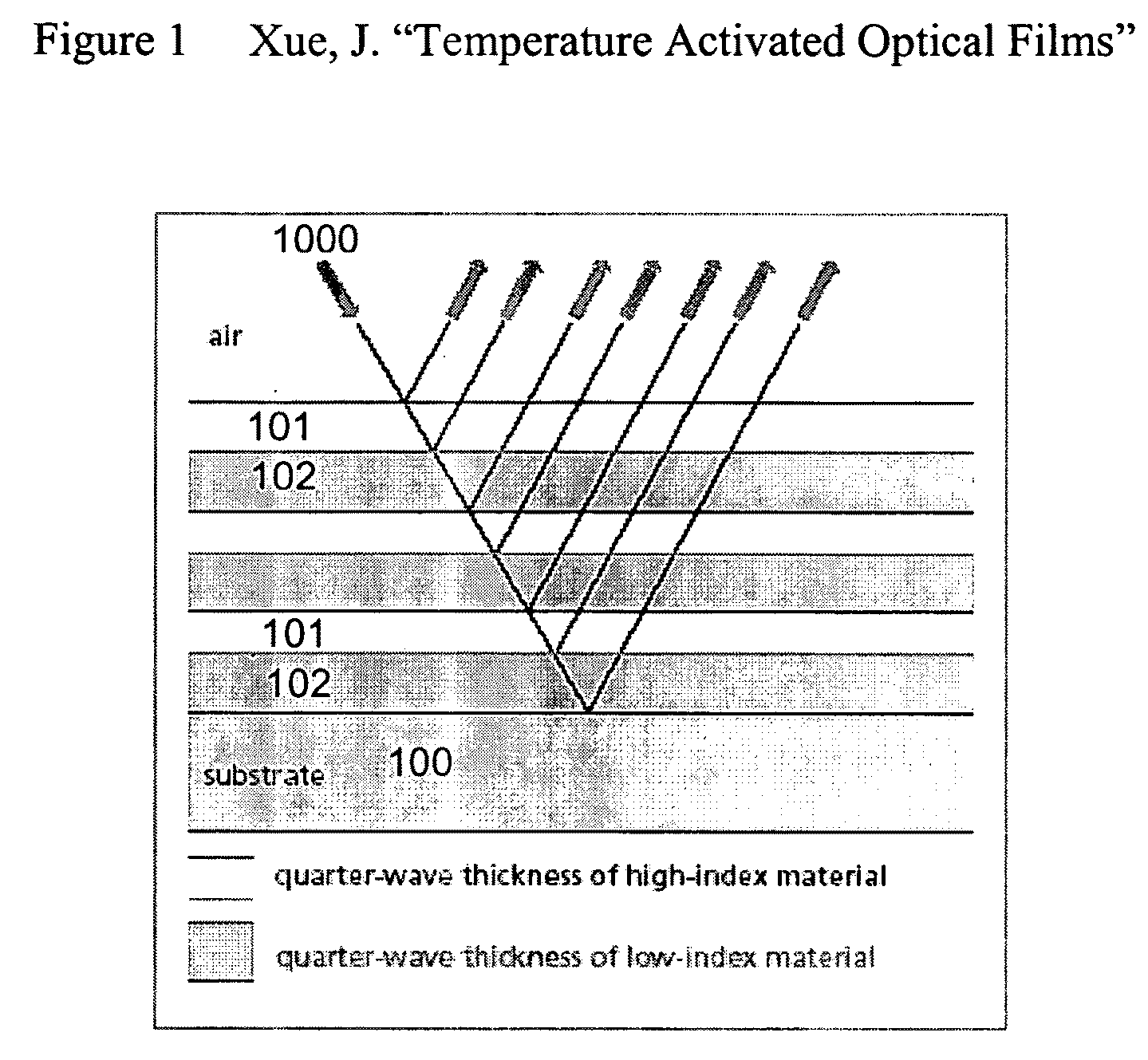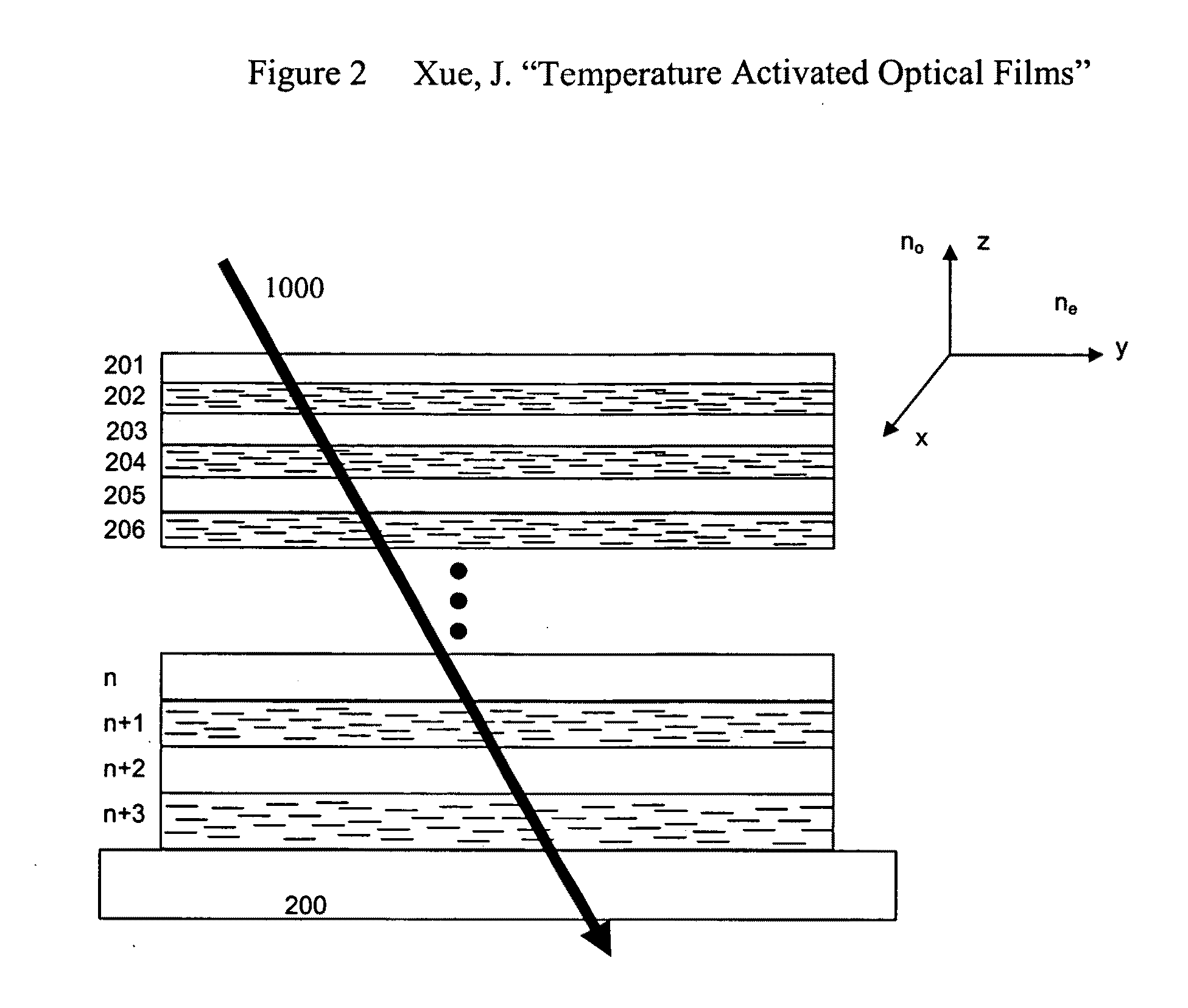Temperature activated optical films
- Summary
- Abstract
- Description
- Claims
- Application Information
AI Technical Summary
Benefits of technology
Problems solved by technology
Method used
Image
Examples
Embodiment Construction
[0034]As used herein, “a” or “an” means one or more.
[0035]As used herein, “Polarization” means the orientation of the electric field oscillations in the plane perpendicular to the electromagnetic wave's direction of travel.
[0036]As used herein, “μm” means micro meter, 1 / 1000000 of a meter in length.
[0037]As used herein, “μm” means nano meter, 1 / 1000000000 of a meter in length.
[0038]As used herein, “birefringent” and “birefringence” means an optical material that shows different effective index of refraction along different directions.
[0039]As used herein, “Optical axis” and “optical axes” means the principal direction or directions of the index ellipsoid of a birefringent material. For biaxial birefringent materials, there are three mutually perpendicular optical axis. For uniaxial materials, typically only one axis, the direction along the extraordinary index of refraction is used.
[0040]As used herein, “refractive index along an optical axis” means a numerical number that measures ...
PUM
 Login to View More
Login to View More Abstract
Description
Claims
Application Information
 Login to View More
Login to View More - R&D
- Intellectual Property
- Life Sciences
- Materials
- Tech Scout
- Unparalleled Data Quality
- Higher Quality Content
- 60% Fewer Hallucinations
Browse by: Latest US Patents, China's latest patents, Technical Efficacy Thesaurus, Application Domain, Technology Topic, Popular Technical Reports.
© 2025 PatSnap. All rights reserved.Legal|Privacy policy|Modern Slavery Act Transparency Statement|Sitemap|About US| Contact US: help@patsnap.com



